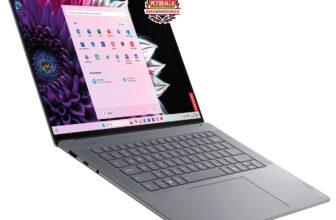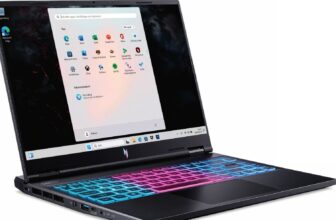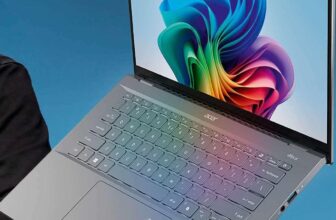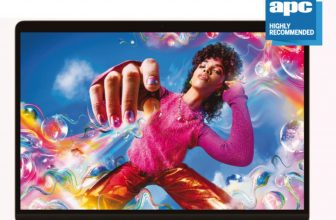Iota Slim Review: Pared-down portable
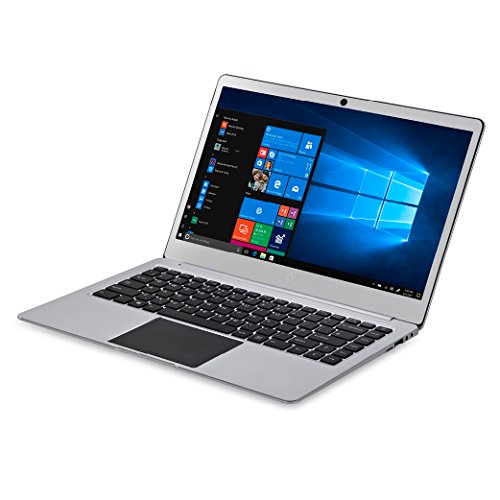
Once upon a time, netbooks – mini laptops with limited specifications at a low price – were the future. Then along came the iPad. Still, demand for cheap portable PCs never went away. Read our Iota Slim Review.
Laptop- tablets like Asus’s Transformers put a bit of life back into the market, and a few full touchscreen tablets with keyboards like the Linx 12X64 have squeezed Windows 10 into budget tablet form. But we don’t see many 200-quid laptops any more.
Table of Contents
[sc name=”ad 2″]
[sc name=”amazon image”]
A sleek shape and big screen, but slow for more complex tasks
Here’s an exception. From a distance, you could mistake its matt aluminium case for a MacBook Air. It doesn’t have such razor-thin front edges, but its screen is 14 inches (not 13.3 or 11.5). Turn it on and you find a Full HD screen with good brightness, contrast and viewing angles.
It can only manage 54 per cent of the sRGB colour range, but for this money it’s very good indeed.
Opposite the screen is a keyboard that lacks backlighting, but is decent, with nice spacing and a crisp enough action for accurate typing. The trackpad worked fine for us, too, though the low 0.3-megapixel resolution of the webcam was disappointing. Around the edges are two USB 3.0 ports (one each side), Micro HDMI for a monitor, and a microSD slot for cards up to 64GB, which would triple the meagre 32GB of storage built in.
And that’s just the beginning of a spec list that someone might have found in a drawer, having left it there in 2010. The dual-core Intel Celeron N3350 processor is actually only two years old, but compared to the i3 chips in today’s basic mainstream laptops it’s in glorified pocket-calculator territory. Add a tiny 2GB of memory and the eMMC storage, which is solid state but can’t match the speed of the slowest SSD, and you’ve got a recipe for treacle pudding. We were concerned that the lota might not finish booting up before being discontinued.
In demanding multi-core tests, the Slim was even slower than the Linx. It was faster in simpler tasks, though, and for less it has a more practical keyboard and screen. If you only want to do a bit of word processing, check your email, browse one or two websites at once and watch TV on the internet, it works. Battery life, at four hours 50 minutes in our video-playback test, can’t compete with tablets or pricier laptops, but it’s enough for a coffee or a commute.
Our biggest concern is the storage. Considering the space taken up by Windows 10, if you leave room for the temporary files required by Microsoft updates, plus enough overhead to avoid the system slowing down, there’s room for almost nothing else. Even the 64GB microSD limit is restricting. There’s a surprisingly good answer: a hatch on the underside lets you install a 42mm M.2 SSD, like the ones in the latest desktop PCs. They’re fast, too.
Compared with netbooks like the HP Stream 11, the Slim is tempting, with its sleek shape and big screen. If you can put up with a 12in display and detachable keyboard, however, the Linx 12X64 has twice the memory and storage, 50 percent longer battery life and the flexibility of a touchscreen. Iota also sells a version with a quad-core Pentium processor and 4GB of memory, but frustratingly there’s still only 32GB of storage.
SPECIFICATIONS
1.1GHz Intel Celeron N3350 dual-core processor • 2GB memory • 32GB flash storage • 14in 1920×1080- pixel screen • Webcam • 802.11n Wi-Fi • MicroSD card slot • 2x USB 3.0 ports • Micro HDMI port • Windows 10 Home • 10x332x222mm (Hx WxD) • 1.33kg • One-year warranty
VERDICT:
When you purchase through links on our site, I may earn an affiliate commission. Here’s how it works.
ALTERNATIVE:
Linx 12X64
It’s still slow, but the 12.5in Full HD touchscreen is quite usable and the 4GB RAM and 64GB storage make more sense




